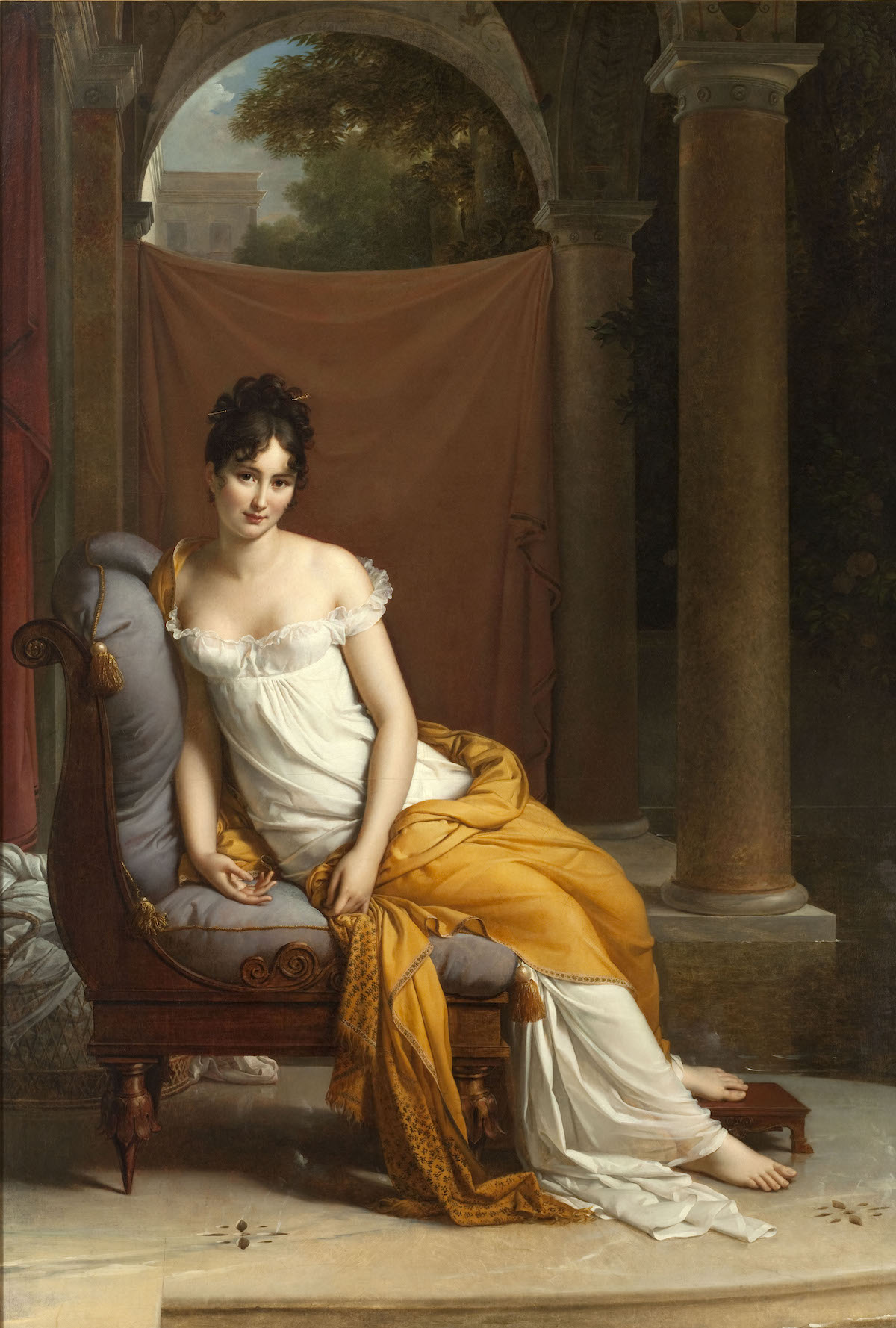‘Liberty, Equality, Fashion’ by Anne Higonnet review
In Liberty, Equality, Fashion: The Women Who Styled the French Revolution, Anne Higonnet brings three dedicated followers of fashion to the fore.

Move over, fraternité: sisterhood rules in this group biography of Juliette Récamier, Térézia Tallien and Marie Josèphe Rose Tascher de La Pagerie, better known as Joséphine Bonaparte. Today the three friends would be called fashion influencers, or perhaps fashion disruptors. Like Marie-Antoinette, the Austrian-born queen of France, all three were outsiders in their own ways: Joséphine came to Paris from the French colony of Martinique, Térézia from Spain and Juliette from Lyon. All three underwent makeovers at their families’ insistence, adopting the latest Paris fashions in hopes of snagging aristocratic husbands. But each woman eventually became the architect of her own fate (and wardrobe) after the French Revolution left both the fashion industry and the aristocracy in tatters.
Fashion is an alluring and effective historical lens for examining women’s lives, as demonstrated recently by Caroline Weber (Marie-Antoinette), Kate Strasdin (Anne Sykes) and Hilary Davidson (Jane Austen). Fashion has served as a form of communication, creativity and protest at times when more conventional avenues of expression were closed to women. ‘If it had not been perceived as an expression of women’s freedom, it would not have been so virulently opposed’, Higonnet writes. These particular women certainly used fashion as a persuasive method of what we would today call ‘personal branding’ – even if it was motivated by self-preservation more than political conviction – and just as surely suffered opposition.
But while Liberty, Equality, Fashion captures the big picture of its heroines’ unconventional lives and dress in the decade 1794-1804, it stumbles over the details. Higonnet, a professor of art history, credits Joséphine, Juliette and Térézia with inventing fashions they merely popularised. In order to highlight the originality of ‘revolutionary dress’, she dismisses all pre-revolutionary fashion as ugly, uncomfortable, elitist and sexist. In fact, the roots of this sartorial insurgency were evident almost a decade before the Revolution, which accelerated changes already in motion. Early adopters of minimalist fashions à la grecque (such as Elisabeth Vigée-Lebrun, Antoinette Saint-Huberty and Emma Hamilton) and ancien régime clothes designed to accommodate pregnancy, outdoor activities or middle-class budgets are ignored. The innovative artisans who actually made the garments these women ‘styled’ are given scant notice.
Lacking expertise in fashion history, Higonnet uses vague, confusing language like ‘underwear cages’, ‘chemise shifts’, ‘slip sleeve’, ‘back drapery’ and ‘sumptuary regalia’. She repeatedly mistranslates linon (meaning lawn, a fine cotton) as linen (lin in French) – a glaring error at a time when cotton was an in-demand fashion fabric and linen was almost entirely reserved for undergarments – and fudges important differences between the fashionable cotton ‘chemise’ gown, the linen undergarment of the same name, and underdresses designed to be seen through sheer white gowns. The author also seems unaware of many of the excellent fashion histories and exhibition catalogues published to celebrate the bicentennial of the French Revolution in 1989.
Higonnet does a fine job of differentiating between her three heroines while illustrating how they worked together to enhance each other’s public images and bolster their precarious social standing. She offers a thoughtful assessment of the colonialist roots of ‘neoclassical’ fashions, and considers the roles of ancillary influencers like Elizabeth Patterson Bonaparte and Germaine de Staël. She stresses her book’s relevance to modern-day concerns over sustainability, gender identity and labour within the fashion industry: ‘I wanted to tell a story about revolutionary style to show how radically we have been able to change clothes. We can do it again.’ But her references to entrepreneurial capitalism, code-switching and ‘gender panic’ push the contemporary angle in directions her heroines would not recognise. She lamely speculates that ‘Térézia must have noticed that people who were better dressed had more confidence in themselves’ and ‘women could feel their dynamic potential from inside their clothing’. There are awkward contradictions, conjectures and rumours where the facts don’t fit Higonnet’s you-go-girl agenda.
The author is on surer footing when recounting her subjects’ biographies, which are stranger (and more entertaining) than fiction. Térézia – ‘the feminine dictator of beauty’ – narrowly escaped the guillotine, sacrificing her long black hair to the Jacobin cause; she would bear 11 children by four different men, not all of them her husbands. Juliette may or may not have married her own father, one of three men in a long-term ménage à quatre with her mother. Joséphine had the satisfaction of seeing her odious first husband executed just five days before the Reign of Terror ended, sparing her own life; her second husband, Napoleon, crowned her Empress of France.
Of course, Liberty, Equality, Fashion is aimed at general readers who will likely get swept up in these sisterly stories of survival and won’t care about (or notice) errors and omissions that are sure to irk historians of fashion and the French Revolution, and that an academic publisher would have ironed out in peer review. The book is beautifully illustrated and includes a rough guide to revolutionary money, a cast of characters and a timeline (though the tripartite narrative remains difficult to follow). But it is hard to ignore the head-spinning tonal shifts from academic jargon to the florid language of a bodice ripper. (‘The older she grew, the more attractive. Her sexuality exerted a magnetic force field. With men of all ages buzzing around her, François Cabarrus decided to marry her advantageously sooner rather than later. Térézia was twelve years old.’) Liberty, Equality, Fashion is backed by a lavish marketing campaign and positive early reviews, but don’t be fooled: this empress has no clothes.
-
Liberty, Equality, Fashion: The Women Who Styled the French Revolution
Anne Higonnet
W.W. Norton, 304pp, £25
Buy from bookshop.org (affiliate link)
Kimberly Chrisman-Campbell is a fashion historian based in Los Angeles. Her latest book is Skirts: Fashioning Modern Femininity in the 20th Century (St. Martin’s Press, 2022).